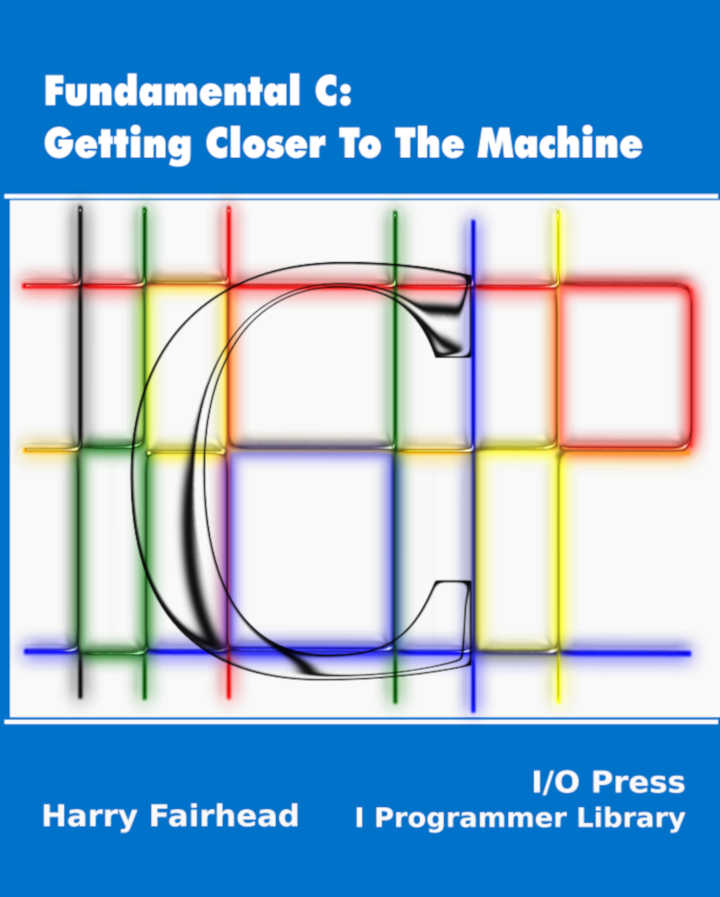| Fundamental C - typedef |
| Written by Harry Fairhead | |||
| Monday, 20 July 2020 | |||
|
This extract, from my book on programming C in an IoT context explains the C typedef. You can write good C without knowing anything about it, but you will find it hard to read other people's programs without it and you will be forever mystified about how structs are defined.
Covered in the first part of the chapter and assumed in this extract:
Using typedefThis extract is from the chapter on structs and it deals with typedef which might seem unconnected with the topic but making structs easier to work with is one of the main uses of typedef. Although it isn’t really anything specifically associated with structs, typedef does tend to be used as a very common alternative way to define them. A typedef is an alias for a type. For example: typedef int myinttype; defines myinttype to be an alias for int. Once defined you can use it as you would int. For example: myinttype myVar; declares myVar to be myinttype which is the same as int. It is easy to misunderstand the way typedef works if you have only seen a simple example. It looks as if myinttype has been made equivalent to int, which is the overall effect, but a typedef is better understood as a modification of the usual declaration. Think of typedef as being a standard declaration where you are not declaring a variable, but an alias for a type. That is: int myinttype; declares the variable to be of type int whereas: typedef int myinttype; declares myinttype to be a type equivalent to int. This becomes more easy to understand with more complex examples. For example: typedef int *mypinttype; defines mypinttype to be a pointer to int, but as a type not a variable. After this you can use it as: mypinttype myPointer; which declares myPointer as a pointer to int. For example: typedef int myArray[20]; declares myArray to be an int array with 20 elements, but as a type. After this you can use it as: myArray myRealArray; and myRealArray is an int array with 20 elements. You can use an alias anywhere you could use the original type and the compiler will not complain if you mix the use of the alias and the type. Despite the fact that this doesn’t add very much, this use of typedef can make your program more readable if you create type names that are more meaningful - age_t, say. On the other hand, a type alias hides the true type of a variable and as such might make your code harder to understand. The real value in typedef is when it is used to create a shorter form of a longer type specification. In C there are three ways that such longer type definitions come into play – pointers, function types and structs. In the case of structs the whole point is to eliminate the need to include struct as part of the type name. For example: struct point {
int x;
int y;
};
typedef struct point point_t;
As a simple declaration, i.e. without typedef, this would make point_t an instance of struct point, but the typedef makes it an alias for the type. Now we can use point_t as an alias for struct point. For example: point_t myPoint={0,0};
This saves having to use struct point and you might think that this is a small advantage. However, the use of typedef to define an alias has become so common that many C programmers think it is the only way to create a struct! Combining the two declarations gives: typedef struct point{
int x;
int y;
} point_t;
which looks a lot more like an integrated declaration of a struct rather than a combination of a struct declaration and a typedef – which is what it is. After this declaration you can use struct point or point_t to declare an instance of the struct. You can also eliminate one of the identifiers by declaring an anonymous struct: typedef struct{
int x;
int y;
} point;
and now it really does look as if this is the form of declaration for a struct. Notice that you can use: typedef struct point{
int x;
int y;
} point;
if you want as the struct point does not introduce the identifier point but the combined struct point. The typedef idiom is very commonly used to create a struct but it is important to realize that it is a combination of typedef and a struct declaration. Notice that: struct point {
int x;
int y;
}myPoint;
creates an instance of point i.e. myPoint is a block of memory but: typedef struct point {
int x;
int y;
}myPoint;
creates a type that has to be used in a declaration, i.e. myPoint is a type with no storage associated with it. As well as structs, typedefs can make other complex declarations simpler. For example, consider defining a pointer to a particular function: int *(pFunc)(int, int); pFunc is a pointer to a function that takes two ints as parameters and returns an int. You can simplify this using: typedef int *(pFunc_t)(int, int); pFunc_t pFunc; where now pFunc_t is a type specifying a pointer to a function that takes two ints and returns an int. Included in the rest of the chapters:
Summary
Related ArticlesRemote C/C++ Development With NetBeans Getting Started With C/C++ On The Micro:bit Fundamental C: Getting Closer To The MachineNow available as a paperback and ebook from Amazon.
Also see the companion volume: Applying C <ASIN:1871962609> <ASIN:1871962463> <ASIN:1871962617> <ASIN:1871962455>
To be informed about new articles on I Programmer, sign up for our weekly newsletter, subscribe to the RSS feed and follow us on Facebook or Linkedin.
Comments
or email your comment to: comments@i-programmer.info
|
|||
| Last Updated ( Monday, 20 July 2020 ) |


